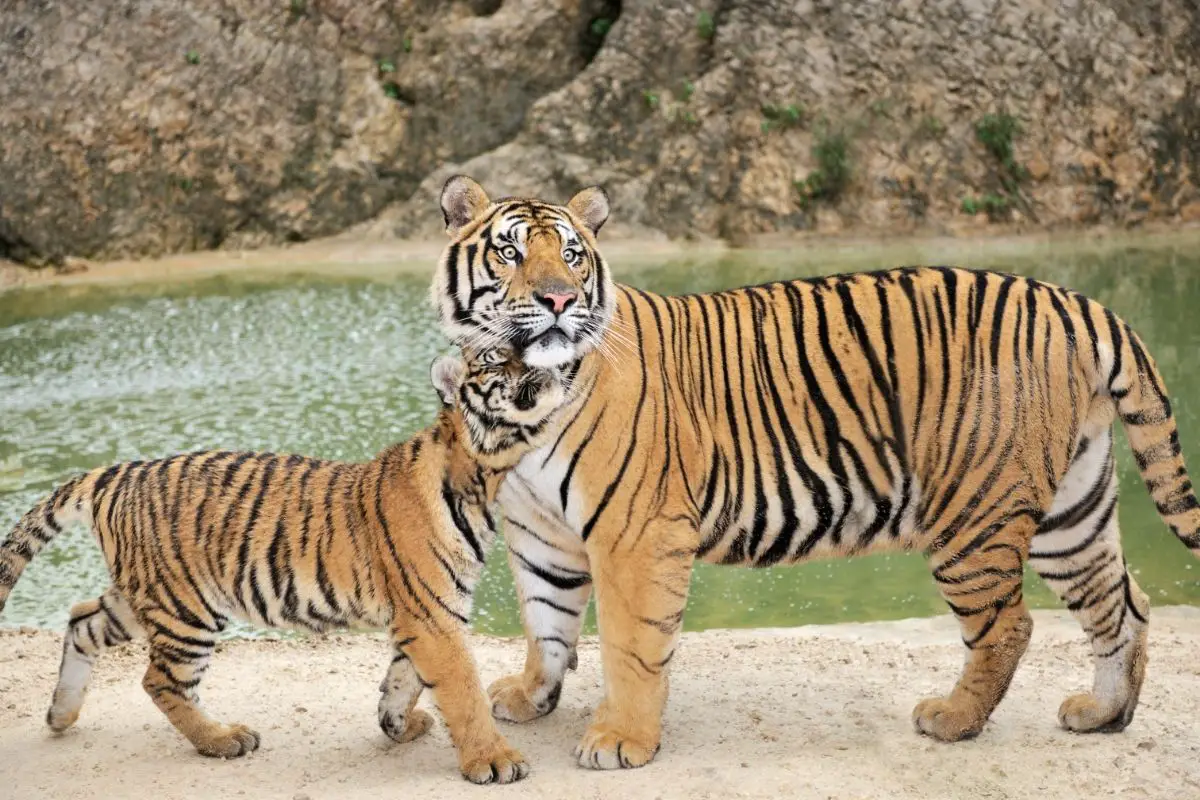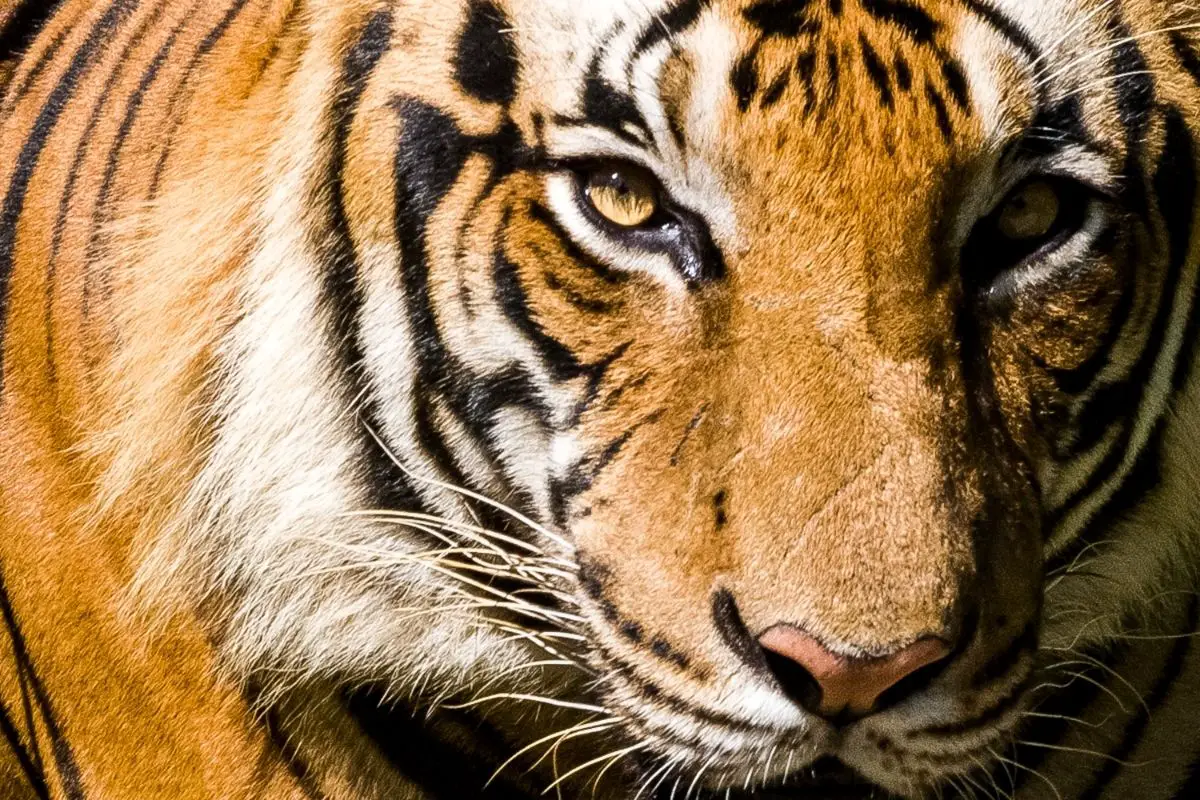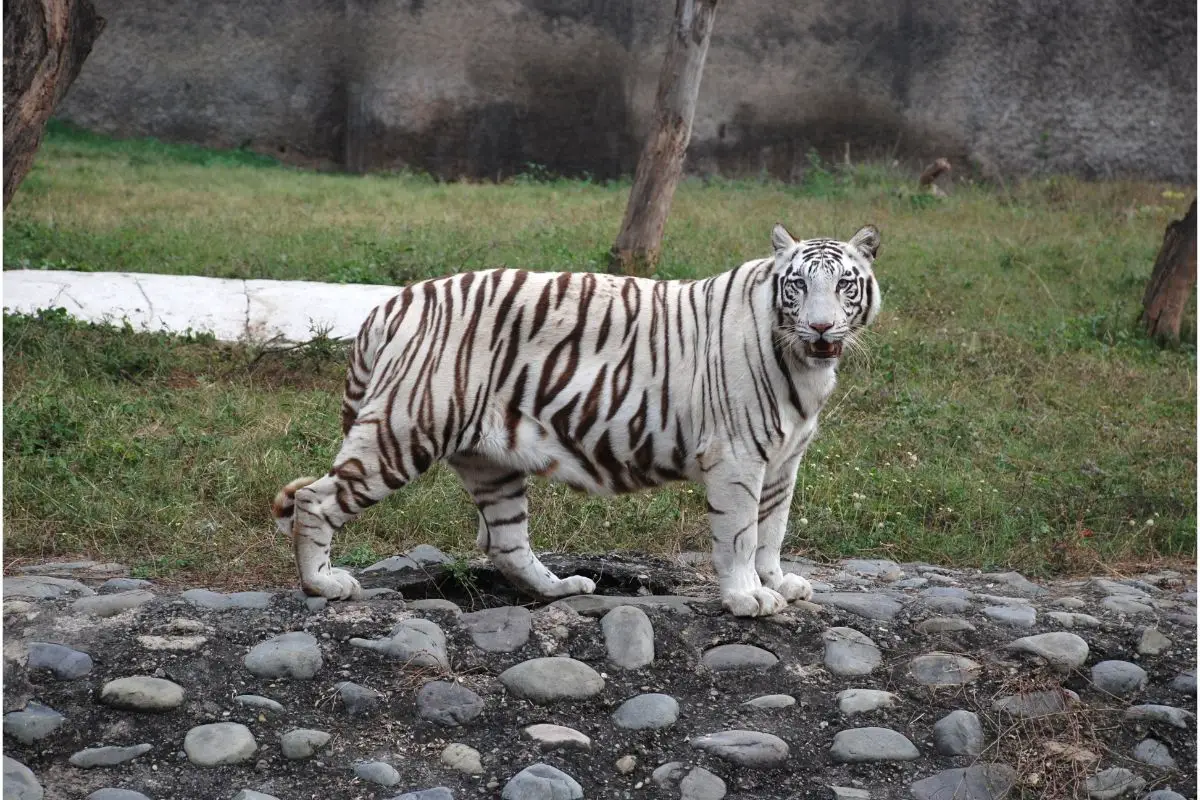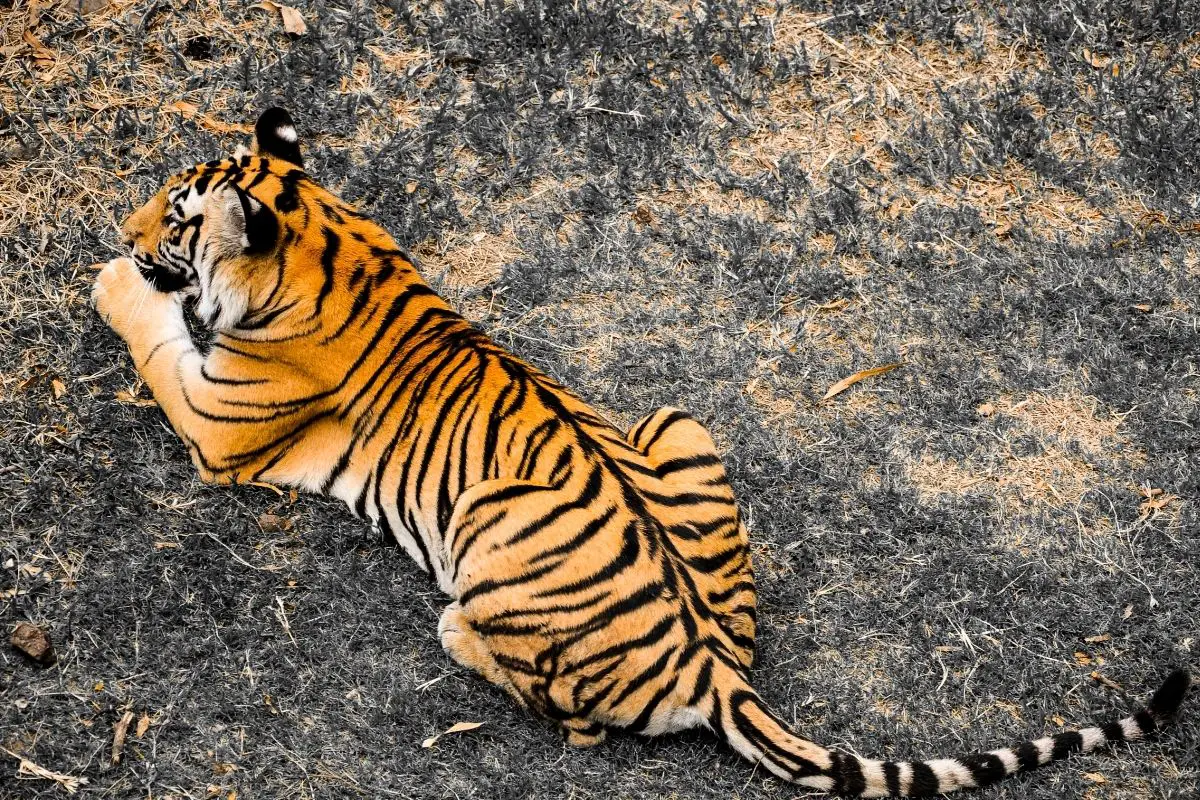Tigers are the biggest species of cat in the entire world. They are known for their wonderfully orange fur and black stripes that make a pattern over their body.

Yet in contrast, they have a white underbelly that creates a distinctive appearance.
They mainly live in solitary conditions, yet require a big habitat to roam freely in.
Whilst the cubs spend the first two of their life with their mothers, after that, they begin to become independent and leave to form a habitat of their own.
Tigers, like a lot of wild cats, have become endangered. A rough estimate of adult tigers puts them at around 3,000 or 5,000 left throughout the world.
With this in mind, how long do tigers live? Let’s take a look!
How Long Is A Tiger’s Life?
On average, a tiger in the wild will live around 11 years. Compared to captivity, they can live up to 26 years, but there are a number of factors to this.
When kept somewhere like a zoo, they have a consistent supply of food and never have to worry about hunting for prey. Also, they do not have their own predators – humans.
Lastly, the weather conditions are steady compared to where they come from.
Now that we have looked at the lifespan of a tiger, let’s take a look at some of the known records when it comes to the oldest living tigers:
- Machali is the oldest female tiger known to live. She died at the age of 20.
- Guddu, a Bengal tiger, passed away at the age of 26 at Kanpur Zoo, India.
- Lastly, two tigers named Ramu and Flavio died at the age of 24.
Whilst we have seen that a tiger who lives in captivity may live up to 26 years, on average, it is actually around 22 years.
Life Cycle Of A Tiger
To really understand how tigers live, you need to know about their life cycle. The stages are from infant and child, to young adult and full-grown adult.
Infant Tiger
The average weight of a newborn tiger is either two or three pounds. They are blind at this stage, but have the ability to nurse due to smelling their own mother.
The infant tigers are particularly vulnerable to predators, so they are kept within a den alongside their mother for up to eight weeks.
Once they reach eight weeks old, meat is introduced and they are welcomed to the outside world.
Child Tiger
A child tiger is eight weeks old and leaves the den for the first time along with their mother to hunt for meat.
Once they hit 18 weeks old, then they are allowed to hunt on their own, and copy what their mother did.
Despite them being okay to hunt small prey, they spend the first year hunting alongside their mother. During this time they become stronger and learn the ways of the tiger.
Young Adult Tiger
At this stage they leave their mothers. This is because it is time to seek out their own territory, as well as search for a mate.
Female tigers are known to make territories close to their mothers, despite the young adult tigers not having a relationship with their mother anymore.
The male tigers are known to travel further distances to seek out a new territory.
Full-Grown Adult Tiger

Now that the tiger has reached full-grown adult, they should have been in a territory already, and are now seeking a mate.
Sadly, if the male tiger decides to mate with a female tiger who already has cubs, he will kill them because they are not his.
Also, adult tigers only really spend time together if they are hunting after the same prey, or mating.
Unfortunately, the majority of full-grown adult tigers never make it past the age of 10. If they did, they could live into their 20s.
Possible Reasons A Tiger Might Die
There are quite a few reasons a tiger may not live past the age of 10. Here are a few of them:
Human Impact On Tigers
Over time, wild cats are becoming extinct. This is because human impact has caused their natural habitats to shrink.
Humans are expanding their own habitat, as well as providing their own domestic animals onto the land.
Places like forests and grasslands have been changed due to agriculture. For example, Asia’s forest has declined within a ten year period by 181,000 square miles.
This was originally lived in by tigers, but they have started to decline as well as a result.
Poaching And Hunting
Poaching is illegal, yet it is done for two reasons: either for financial reasons to gain money, or in fear of the tigers. The latter is currently seen as both a threat to wild animals and humans.
Sadly, animals have long been killed to take the fur, which is then sold – albeit illegally. However, this has decreased since laws have been put into place.
Also, domestic animals are prey for desperate tigers, and these tigers get caught in the act and shot, or are poisoned.
Tiger’s Predators
Whilst humans are known to be the number one threat of a tiger (see above), they do have their own wild predators, especially tiger cubs.
Wild bears and Asiatic wild dogs are known to attack and kill tigers, but it’s the cubs who need to be protected the most.
These can get killed by smaller wildlife such as crocodiles and snakes.
They seek out the cubs because they are smaller and weaker, and still make a nice meal to feed off for several days.
Final Thoughts On How Long Do Tigers Live
Tigers don’t live for very long in the wild due to human impact and predators, but once they are put into captivity, their risks are lowered so they may live into their mid twenties.
On average, a tiger may live to be 10 years old which is a full-grown tiger!
- Sink Your Teeth Into This: Analyzing the Powerful Lion Bite Force - September 8, 2023
- Siberian Tigers: Everything You Need To Know - September 4, 2023
- Do Lions Eat Humans? Understanding Lion Aggression and Risks - September 4, 2023









